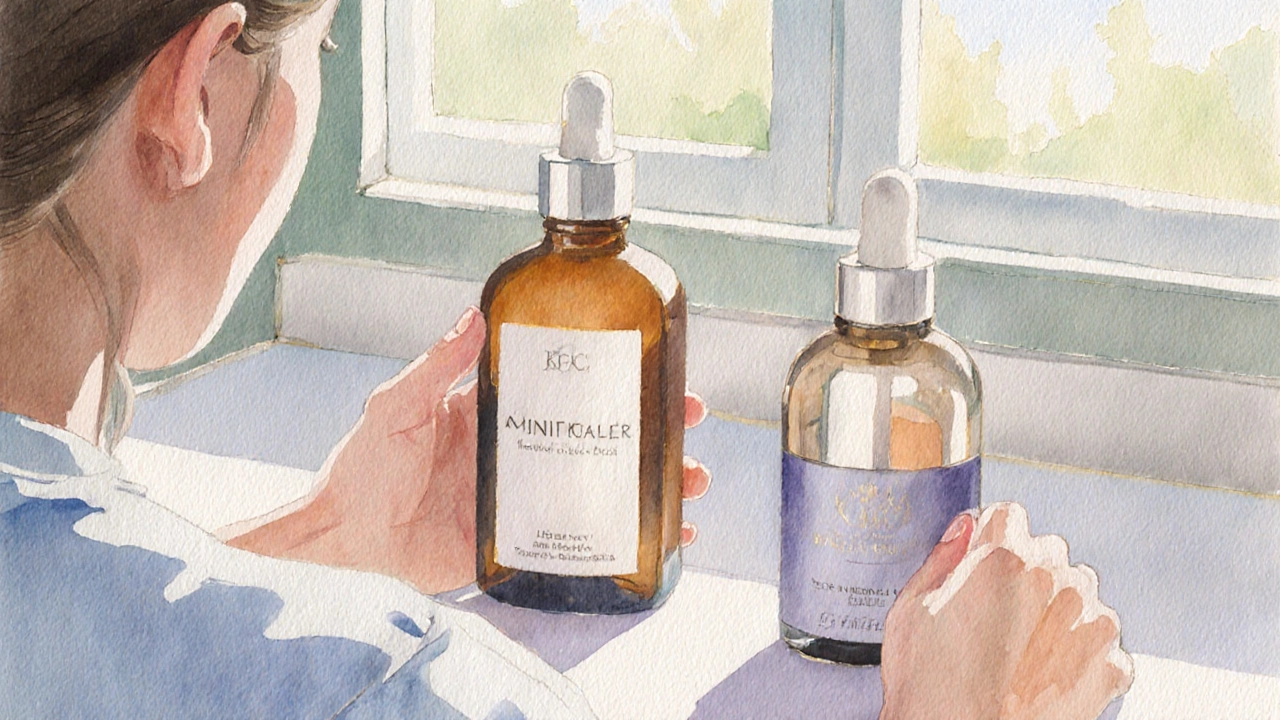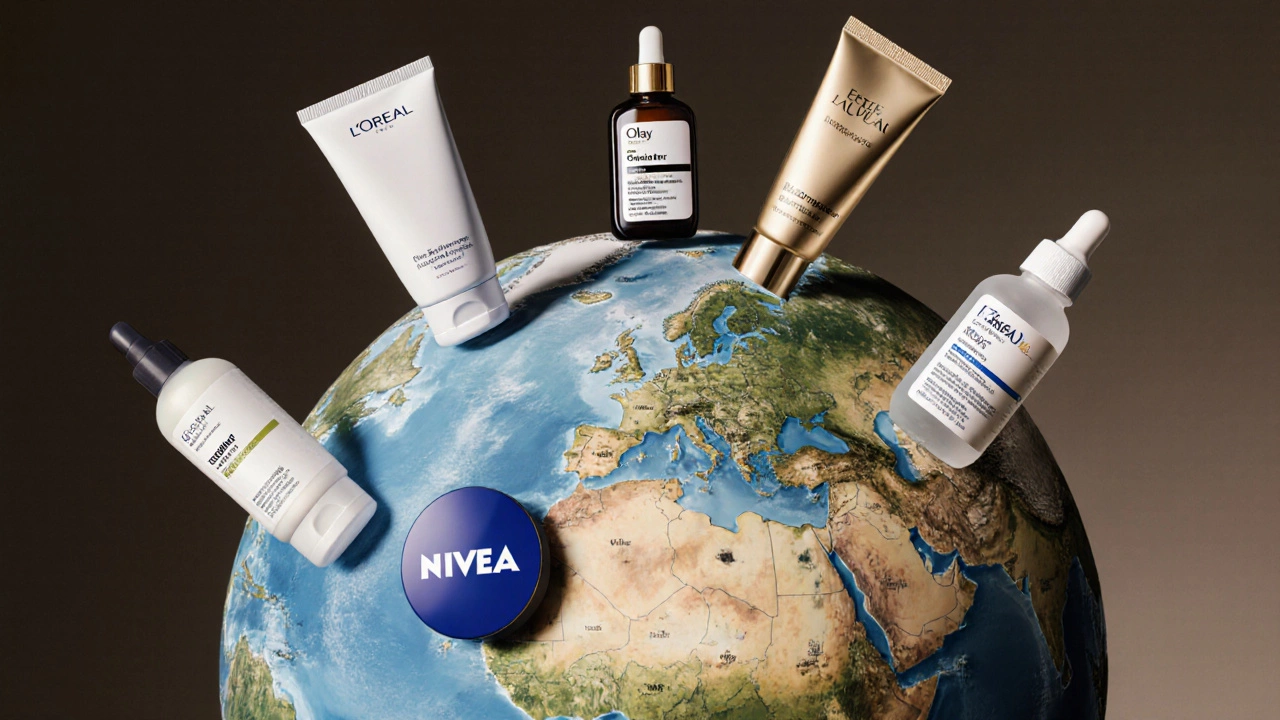Key Takeaways
- The global skin‑care market is led by a handful of giants, with L'Oréal holding the largest share in 2024.
- Sales volume, social‑media buzz and consumer loyalty surveys all point to the same top performers.
- Brands that blend science with clean‑beauty trends-like The Ordinary and CeraVe-rank high among younger shoppers.
- Understanding a brand’s parent company, product focus and price tier helps you decide which one fits your routine.
- Choosing the "most popular" brand doesn’t guarantee it’s the best for your skin; use the guidelines below to match popularity with personal needs.
When you ask, what is the most popular skin care brand, you’re really looking for the name that tops sales charts, dominates Instagram hashtags, and shows up most often in dermatologist recommendations. In 2025 the landscape is clearer than ever because data from market‑research firms, social‑media listening tools and consumer polls line up around a few industry leaders.
How We Measure Popularity
Popularity can be sliced in three ways:
- Revenue share: Global sales figures from Euromonitor and Statista give a hard‑number view of who sells the most product.
- Social‑media traction: Mentions, hashtag usage, and follower counts on Instagram, TikTok and YouTube reveal which brands spark the most conversation.
- Consumer loyalty scores: Third‑party surveys (e.g., Mintel’s Beauty Tracker) ask shoppers to name their go‑to skin‑care label and rank satisfaction.
When a brand ranks near the top in all three categories, it’s safe to call it the most popular.
Top Contenders in 2025
Below are the six brands that consistently rank highest across revenue, buzz and loyalty.
When you hear “L'Oréal is a French multinational beauty group that dominates the global skincare market, with a 2024 sales figure of $21.5billion, representing roughly 20% of worldwide skin‑care revenue.” it’s clear why L'Oréal often tops the list.
Another heavyweight, Estée Lauder (parent company EstéeLauder Companies) posted $13.2billion in skin‑care sales last year, fueling a 15% market share.
Olay, owned by Procter & Gamble, generated $9.8billion in 2024, making it the most‑bought mass‑market brand in North America.
Nivea, the flagship of Beiersdorf, logged $7.4billion in sales, strong in Europe and emerging markets.
The rise of “clinical‑cosmetics” has pushed The Ordinary (Deciem) to a $4.1billion turnover, thanks to its transparent ingredient lists and sub‑$10 price points.
Finally, dermatologist‑favored CeraVe, part of L'Oréal’s portfolio since 2017, notched $3.9billion, thanks to its barrier‑repair formulas.
Comparison Table
| Brand | Parent Company | Global Sales (USDbn) | Market Share % | Signature Line |
|---|---|---|---|---|
| L'Oréal | L'Oréal Group | 21.5 | 20 | Revitalift |
| Estée Lauder | Estée Lauder Companies | 13.2 | 15 | Advanced Night Repair |
| Olay | Procter & Gamble | 9.8 | 11 | Regenerist |
| Nivea | Beiersdorf | 7.4 | 8 | Soft Cream |
| The Ordinary | Deciem (owned by Estée Lauder) | 4.1 | 4 | Niacinamide 10%+ Zinc 1% |
| CeraVe | L'Oréal Group | 3.9 | 4 | Hydrating Cleanser |
Why L'Oréal Leads the Pack
L'Oréal’s dominance isn’t accidental. The group invests $1.5billion annually in R&D, gives it a pipeline of patented actives ranging from peptide‑complexes to botanical extracts. Its portfolio spans luxury (Lancôme), prestige (Garnier) and drug‑store tiers, letting the brand capture every price point. Moreover, L'Oréal’s early adoption of AI‑driven personalization tools (e.g., the “Skin Genius” app) drives digital sales, which grew 28% YoY in 2024.

Estée Lauder: Prestige Powerhouse
Estée Lauder’s focus on high‑touch retail experiences-think boutique counters and exclusive samples-keeps its customers willing to pay premium prices. The “Advanced Night Repair” serum alone accounted for $2.1billion in 2024. The brand also leverages celebrity endorsements (e.g., Kylie Jenner) to stay culturally relevant.
Olay: Mass‑Market Champion
Olay’s strength lies in its ubiquitous presence. You’ll find it in supermarkets, pharmacies and online marketplaces across more than 150 countries. The brand’s “Regenerist” line uses a patented peptide called “Palmitoyl Pentapeptide‑4,” which research shows improves skin elasticity by up to 12% after eight weeks.
Nivea: European Staple
Nivea’s formula basics-simple moisturizers with mineral oil and panthenol-resonate with consumers who value reliability over hype. The brand’s “Soft Cream” still ships in 180‑gram tubs worldwide, a testament to its staying power.
The Ordinary: Transparency Trendsetter
The Ordinary reshaped the market by publishing ingredient percentages on every label. Its “Niacinamide 10% + Zinc 1%” serum became a cult favorite because it targets oil control without a heavy perfume load. The brand’s yearly revenue grew 38% in 2024, driven by Gen‑Z shoppers.

CeraVe: Barrier‑Repair Specialist
CeraVe’s key differentiator is its inclusion of three essential ceramides (NP, AP, EOP) that mimic the skin’s natural lipid matrix. Dermatologists frequently recommend it for eczema‑prone patients, and that clinical endorsement fuels steady growth.
Consumer Trends Shaping the Rankings
- Clean‑beauty demand: Brands that certify “cruelty‑free” or “vegan” see higher engagement, explaining The Ordinary’s surge.
- Digital‑first shopping: Brands with robust e‑commerce platforms (L'Oréal, Olay) capture post‑pandemic online spend.
- Personalization: AI skin‑analysis tools increase conversion rates, a niche L'Oréal leveraged early.
- Price sensitivity: Economic uncertainty keeps value‑driven brands like The Ordinary and CeraVe in the spotlight.
How to Pick the Right Brand for Your Skin
- Identify your skin type: oily, dry, combination, sensitive.
- Match ingredient priorities: acne‑fighting (salicylic acid), anti‑aging (retinol), barrier support (ceramides).
- Set a budget: premium lines (Estée Lauder) work for occasional treatment; drug‑store options (Olay, Nivea) cover daily basics.
- Read dermatologist endorsements: CeraVe and Olay often appear in clinic recommendations.
- Trial first: many brands offer travel‑size packs; test for two weeks before committing.
Popularity helps narrow choices, but the best brand for you is the one that aligns with your skin’s needs and your lifestyle.
Frequently Asked Questions
Which skin‑care brand has the highest global sales?
L'Oréal leads the market with about $21.5billion in skin‑care sales for 2024, representing roughly 20% of worldwide revenue.
Are the most popular brands also the best for sensitive skin?
Not always. Brands like CeraVe and La Roche‑Posay specialize in barrier‑repair formulas that are specifically tested on sensitive skin, while some high‑sales lines (e.g., certain luxury serums) may contain fragrance that can irritate sensitive types.
How does social‑media buzz influence a brand’s popularity?
Platforms like TikTok and Instagram amplify trends quickly. When a brand’s product goes viral-think The Ordinary’s “Buffet” serum-it spikes sales, drives user‑generated content, and climbs ranking lists even if its overall revenue hasn’t yet caught up.
What future trends could shift the ranking of top skin‑care brands?
Growth of biotech‑derived actives, increased regulation of “clean” claims, and wider adoption of AI‑personalized regimens could elevate newer, science‑focused brands while challenging incumbents that lag in innovation.

